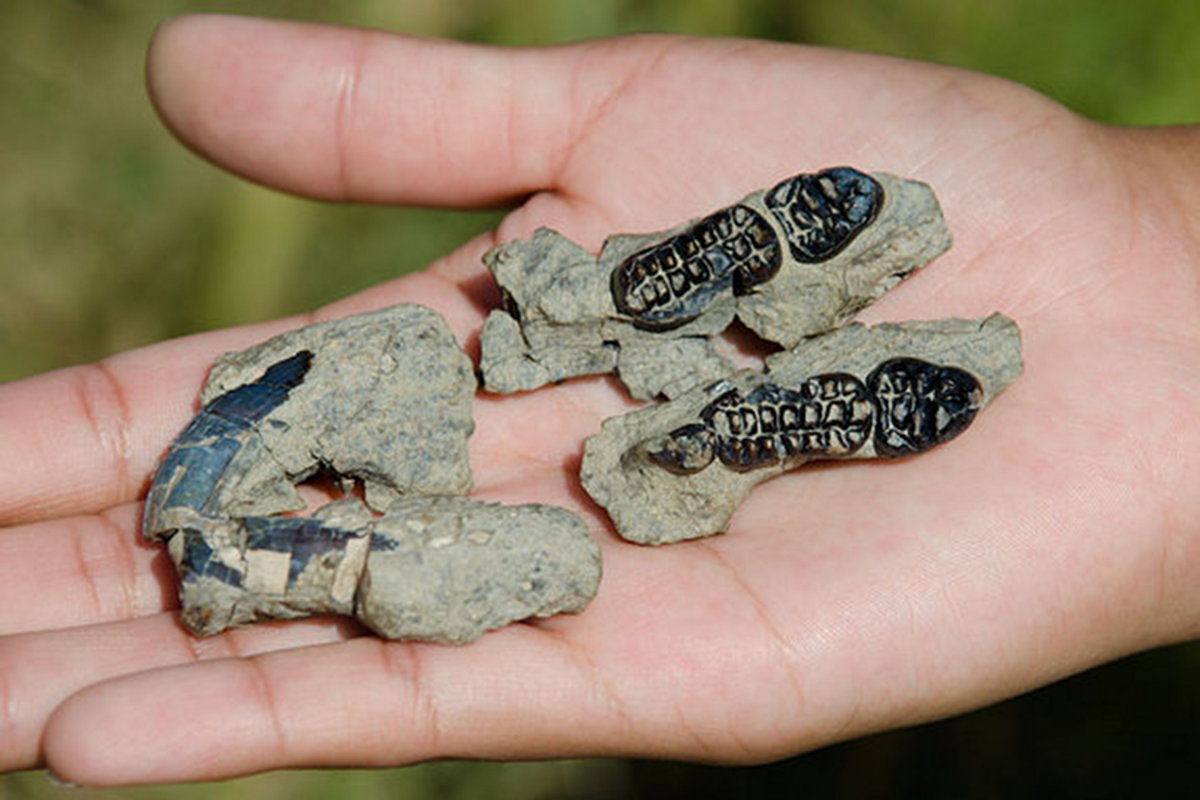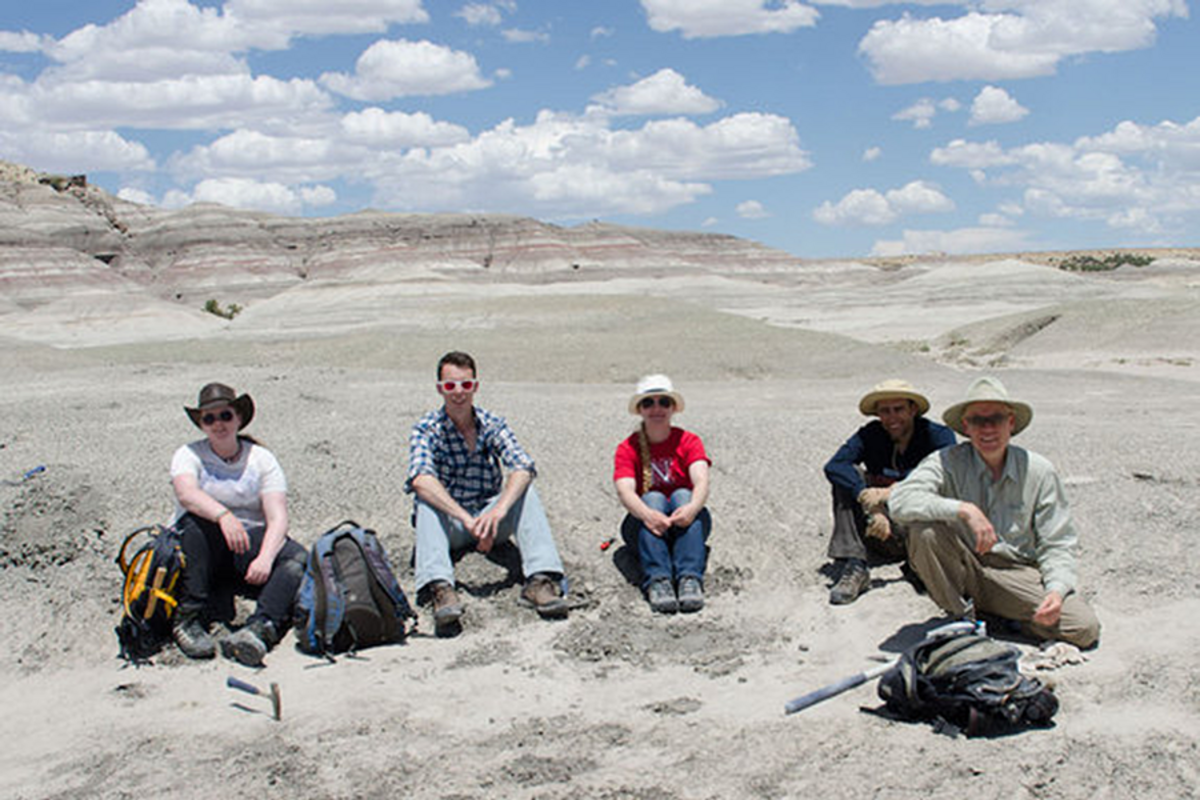Furry, beaver-like creature thrived after dino-killing asteroid
Loading...
A furry, beaverlike mammal that survived the apocalyptic dinosaur-killing space rock that crashed to Earth 66 million years ago hid out in what is now New Mexico, grinding up leafy meals with its enormous molars.
Though small, the mammal is an exciting find, the researchers said. It belongs to a group of rodentlike mammals called multituberculates, named for the numerous cusps, or tubercles, found on their teeth. Multituberculates lived alongside dinosaurs, but managed to survive the mass extinction at the end of theCretaceous period. They lived for another 30 million years before they, too, went extinct, the researchers said.
"This was a pretty big [multituberculate] and one that clearly ate plants, [which we can tell] because of the complexity of its teeth," said study co-researcher Steve Brusatte, a paleontologist at the University of Edinburgh in Scotland. [In Photos: Mammals Through Time]
University of Nebraska-Lincoln undergraduate Carissa Raymond discovered the fossil during a 2014 dig in northwestern New Mexico, a place rich with dinosaur and mammal fossils, Brusatte said.
The new fossil is dated to between 65.5 million and 66 million years ago, or just after the dinosaur-killing asteroid hit Earth, he said.
"It lived only a couple hundred thousand years after the extinction, so it's kind of neat to find a fairly large [mammal] — we're talking beaver size," Brusatte said.
During the dinosaur era, mammals were petite, about the size of rats or smaller. "They weren't able to grow bigger, almost certainly because there were all these dinosaurs around that were filling those bigger niches," he said.
But when nonavian dinosaurs went extinct, mammals continued to diversify and take over niche environments that dinosaurs once filled. Some multituberculates got decently large, weighing up to 220 lbs. (100 kilograms), Brusatte said.
"They weren't elephants, but for this early on, they were pretty big," he said.
Spectacular teeth
Researchers named the newfound species Kimbetopsalis simmonsae, in honor of the area in which they found it, Kimbeto Wash, New Mexico. The Greek word "psalis" means "cutting shears," a reference to the creature's magnificent teeth, and the species name, "simmonsae," is a nod to Nancy Simmons, a researcher at the American Museum of Natural History renowned for her work on multituberculates.
Kimbetopsalis simmonsae likely weighed about 88 lbs. (40 kg) and likely measured just under 1.6 feet (0.5 meters) from head to tail, Brusatte said.
A dental analysis showed that K. simmonsae's molars were large and rectangular, and had more cusps than the teeth of other multituberculates, said study lead researcher Thomas Williamson, a curator of paleontology a the New Mexico Museum of Natural History and Science.
"Each of the cusps can also have crenulations — little ridges," Williamson told Live Science in an email. "These cusps wear through use. Based on their [shape] and patterns of wear, we know that they functioned in grinding."
According to the fossil record, the new find belongs to a subgroup of multituberculates known as taeniolabidoids. This subgroup got its start right before the dinosaur extinction event, and flourished afterward in Asia and North America, until about 57 million years ago. But it's unclear why they died out, Brusatte said. [Wipe Out: History's Most Mysterious Extinctions]
In contrast, other multituberculates continued living for another 20 million years after the taeniolabidoids died. Researchers have a few ideas on why multituberculates went extinct. Perhaps these animals were competing with rodents, another successful group of mammals that were diversifying at that time, Brusatte said.
"Whether the rodent outcompeted them or whether it was more a break for rodents that the multituberculates were already declining, it's hard to say," he said. "But the general gist of it is that the multituberculates went extinct about 35 million years ago or so, and they were superseded by rodents."
The fossil finding shows how mammals, such as multituberculates, were successful after the downfall of the dinosaurs.
"It's part of that picture that shows how quickly mammals started to blossom, and how quickly they started to evolve and create a whole new world really within thousands and thousands of years of the extinction," Brusatte said.
Follow Laura Geggel on Twitter @LauraGeggel. Follow Live Science @livescience, Facebook & Google+. Original article on Live Science.
- Paleo-Art: Dinosaurs Come to Life in Stunning Illustrations
- Image Gallery: 25 Amazing Ancient Beasts
- Avian Ancestors: Dinosaurs That Learned to Fly
Copyright 2015 LiveScience, a Purch company. All rights reserved. This material may not be published, broadcast, rewritten or redistributed.









